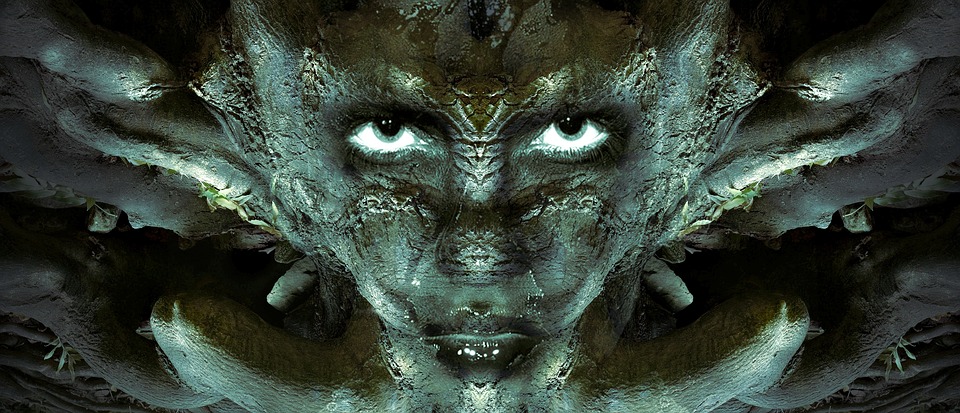Dryad's Rot
Rot crept up my arms and with a rash the likes I'd never seen before, gave me a a new view of the world; mostly that my "safe" community could become hateful at any moment and for any reason, no matter facts and logic.
Transmission & Vectors
The condition itself goes through water and can also be spread via air in windy rainstorms as well as the groundwater that pools and submerges root systems and trunks.
Causes
Dyrad's Rot starts when pollen from [FLOWER NAME] sits in stagnant water for over a week's time and undergoes a chemical transformation that turns it into a growing mold that is very difficult to remove from infected trees and plants. Most commonly seen in the weeks after the rainy season ends.
Symptoms
Stage 1: An affected tree loses its colour beginning where the infection sets in, the trunk* or roots.
Stage 2: A sharp and bitter scent wafts from the tree.
Stage 3: Losing discoloured leaves and bark begins to peel off in long strips.
Stage 4: The branches themselves weaken and have a high possibility of falling off. This occurs more often in tree-based beings since they are moving around and is a little harder to spot in trees that do not have creatures/critters climbing about.
Stage 5: The rot has spread from bottom to top (or from the middle to both top and bottom) and at this point, there is no return to health, the tree or the being is on a decline that leads to eventual death.
*Since this ailment needs to be treated, it's better to have it start on the trunk so it's found quickly (the roots allow a quicker spread to the branches and if caught in time can result in a harsh recovery).
Treatment
A cure has now been discovered and treatment can begin as early as Stage 1 and as late as Stage 4. The treatment continues to have the same base, however, it differs slightly in when it's needed.
Stage 1: A topical wash that is given to the area on the trunk/roots where rot can be seen. This wash continues for five days and when the rot is gone, one more day after that (to make sure it doesn't come back).
Stage 2: The topical wash is for a longer time period and is also poured onto the ground twice (once at the beginning and once at the end) around the root system so that it soaks it up.
Stage 3: The mixture, at this point, needs to be poured at the roots every day this treatment is done. The bark strips need to be pulled off completely or they will re-infect the tree. The leaves need to be gathered, soaked in the liquid, dried, and then set on fire so that the smoke envelopes the tree.
Stage 4: Each twig, limb, and branch needs to be checked (if weak, the decision is to remove the area or shore it up so that it can be stronger when the rot is gone.). The bark needs to be peeled away, and with the smoke done every day for the four consecutive days, the wash also needs to occur. (A helper or two is needed to ensure the patient makes it through.)
Prognosis
If a tree or tree-based being is "cured" of the rot, then there might still be health-related issues later on in life. Stages 1 and 2 seem, at this point, to have no long-term damage, but Stage 3 leaves the tree or being with discolouration and bark that is weak to wind, ice, and movement (it tears off easily). Stage 4 will leave limbs and twigs weak for years after and might be a complication that leads to an earlier death than average.
Sequela
If affected limbs and twigs are not removed or the roots are ignored when the mixture is poured, then the rot can look as if it goes away but in reality, it is setting up to grow again.
Prevention
During the rainy season, beings can disrupt stagnant bodies of water and wash themselves after rainstorms to make sure it's not adhered to them. Even with the best of care and intentions, there are some cases that slip through.
Epidemiology
If the trees are stationary, then the rot spreads quickly as usually this is in a secluded area (copse, forest, etc.) where there are not many people to see.
If this is affecting moving trees, such as Dryads, then the affected person is placed at a distance away where helpers can come if needed, but there is no worry that they will spread the rot amongst the community.
Cultural Reception
For those beings that have pulled through and show no signs of the infection, they are welcomed back into society. Trees, on the other hand, after checking to make sure it is a tree and not a being, are chopped down burnt.
For any beings that show past rot infections, they are politely talked to, but in the end, they usually go to find other afflicted beings and join a growing community with them.
Cycle
Chronic, Acquired
Rarity
Unique



I love the detail you've gone into about the symptoms and what needs to be done to cure it at the different stages. :)
Thanks, I had fun with this!